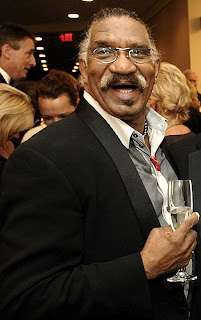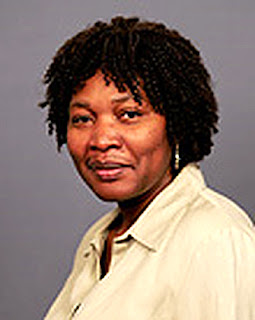H.R.2447 -- To grant the congressional gold medal to the Montford Point Marines. (Engrossed in House [Passed House] - EH)
HR 2447 EH 112th CONGRESS 1st Session H. R. 2447 AN ACT
To grant the congressional gold medal to the Montford Point Marines.
Be it enacted by the Senate and House of Representatives of the United States of America in Congress assembled,
SECTION 1. FINDINGS.
Congress makes the following findings:
(1) On June 25, 1941, President Franklin D. Roosevelt issued Executive Order No. 8802 establishing the Fair Employment Practices Commission and opening the doors for the very first African-Americans to enlist in the United States Marine Corps.
(2) The first Black Marine recruits were trained at Camp Montford Point, near the New River in Jacksonville, North Carolina.
(3) On August 26, 1942, Howard P. Perry of Charlotte, North Carolina, was the first Black private to set foot on Montford Point.
(4) During April 1943 the first African-American Marine Drill Instructors took over as the senior Drill Instructors of the eight platoons then in training; the 16th Platoon (Edgar R. Huff), 17th (Thomas Brokaw), 18th (Charles E. Allen), 19th (Gilbert H. Johnson), 20th (Arnold R. Bostic), 21st (Mortimer A. Cox), 22nd (Edgar R. Davis, Jr.), and 23rd (George A. Jackson).
(5) Black Marines of the 8th Ammunition Company and the 36th Depot Company landed on the island of Iwo Jima on D-Day, February 19, 1945.
(6) The largest number of Black Marines to serve in combat during World War II took part in the seizure of Okinawa in the Ryuku Islands with some 2,000 Black Marines seeing action during the campaign.
(7) On November 10, 1945, the first African-American Marine, Frederick C. Branch, was commissioned as a second lieutenant at the Marine Corps Base in Quantico, Virginia.
(8) Overall 19,168 Blacks served in the Marine Corps in World War II.
(9) An enterprising group of men, including original Montford Pointer Master Sergeant Brooks E. Gray, planned a reunion of the Men of Montford Point, and on September 15, 1965, approximately 400 Montford Point Marines gathered at the Adelphi Hotel in Philadelphia, Pennsylvania, to lay the foundation for the Montford Point Marine Association Inc., 16 years after the closure of Montford Point as a training facility for Black recruits.
(10) Organized as a non-military, nonprofit entity, the Montford Point Marine Association's main mission is to preserve the legacy of the first Black Marines.
(11) Today the Montford Point Marine Association has 36 chapters throughout the United States.
(12) Many of these first Black Marines stayed in the Marine Corps like Sergeant Major Edgar R. Huff.
(13) Sergeant Major Huff was one of the very first recruits aboard Montford Point.
(14) Sergeant Major Huff was also the first African-American Sergeant Major and the first African-American Marine to retire with 30 years of service which included combat in three major wars, World War II, the Korean War, and the Vietnam War.
(15) During the Tet Offensive, Sergeant Major Huff was awarded the Bronze Star Medal with combat `V' for valor for saving the life of his radio operator.
(16) Another original Montford Pointer who saw extensive combat action in both the Korean War and the Vietnam War was Sergeant Major Louis Roundtree.
(17) Sergeant Major Roundtree was awarded the Silver Star Medal, four Bronze Star Medals, three Purple Hearts, and numerous other personal and unit awards for his service during these conflicts.
(18) On April 19, 1974, Montford Point was renamed Camp Johnson after legendary Montford Pointer Sergeant Major Gilbert `Hashmark' Johnson.
(19) The Montford Point Marine Association has several memorials in place to perpetuate the memory of the first African-American Marines and their accomplishments, including--
(A) the Montford Point Marine Association Edgar R. Huff Memorial Scholarship which is offered annually through the Marine Corps Scholarship Foundation;
(B) the Montford Point Museum located aboard Camp Johnson (Montford Point) in Jacksonville, North Carolina;
(C) the Brooks Elbert Gray, Jr. Consolidated Academic Instruction Facility named in honor of original Montford Pointer and the Montford Point Marine Corps Association founder Master Gunnery Sergeant Gray. This facility was dedicated on 15 April 2005 aboard Camp Johnson, North Carolina; and
(D) during July of 1997 Branch Hall, a building within the Officers Candidate School in Quantico, Virginia, was named in honor of Captain Frederick Branch.
SEC. 2. CONGRESSIONAL GOLD MEDAL.
(a) Award Authorized- The Speaker of the House of Representatives and the President pro tempore of the Senate shall make appropriate arrangements for the award, on behalf of the Congress, of a single gold medal of appropriate design in honor of the Montford Point Marines, collectively, in recognition of their personal sacrifice and service to their country.
(b) Design and Striking- For the purposes of the award referred to in subsection (a), the Secretary of the Treasury (hereafter in this Act referred to as the `Secretary') shall strike the gold medal with suitable emblems, devices, and inscriptions, to be determined by the Secretary.
SEC. 3. DUPLICATE MEDALS.
Under such regulations as the Secretary may prescribe, the Secretary may strike and sell duplicates in bronze of the gold medal struck under section 2, at a price sufficient to cover the costs of the medals, including labor, materials, dies, use of machinery, and overhead expenses.
SEC. 4. NATIONAL MEDALS.
Medals struck pursuant to this Act are National medals for purposes of chapter 51 of title 31, United States Code.
SEC. 5. AUTHORIZATION OF APPROPRIATIONS; PROCEEDS OF SALE.
(a) Authorization of Appropriations- There is authorized to be charged against the United States Mint Public Enterprise Fund, an amount not to exceed $30,000 to pay for the cost of the medals authorized under section 2.
(b) Proceeds of Sale- Amounts received from the sale of duplicate bronze medals under section 3 shall be deposited in the United States Mint Public Enterprise Fund.
Passed the House of Representatives October 25, 2011. Attest: Clerk. 112th CONGRESS 1st Session H. R. 2447
AN ACT
To grant the congressional gold medal to the Montford Point Marines.





























